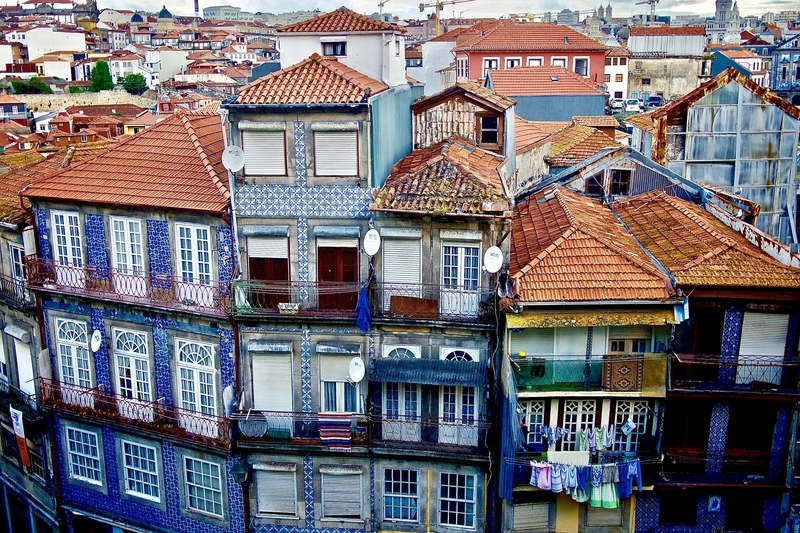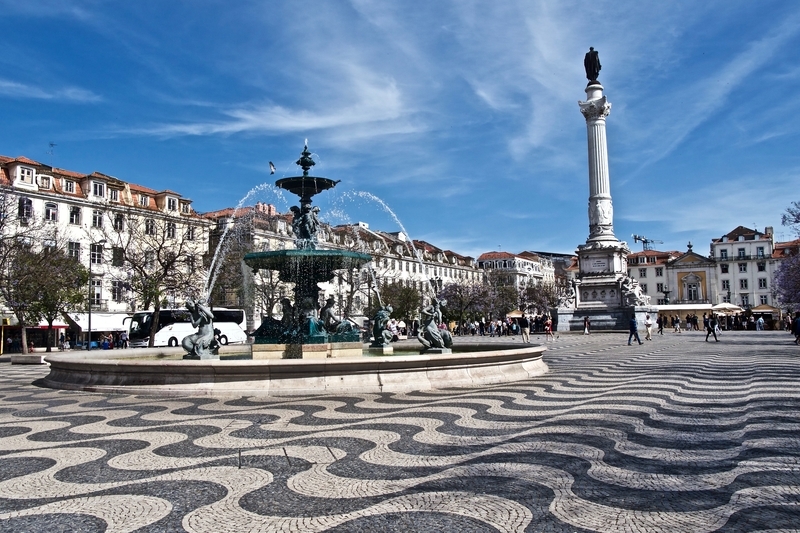
Two Days in Lisbon: The San Francisco of Europe
As soon as I set foot on the picturesque streets of Lisbon Portugal, I was hit with an overwhelming sense of déjà vu. Despite the fact that it was my first time in Portugal, the city’s hilly lanes, bayside views and rickety streetcars, all seemed so familiar. It didn’t take long for me to realize that this sensation of retracing my steps, was due to the uncanny parallels between Portugal’s capital and California’s Golden City—San Francisco.
With its charming neighborhoods, its orange suspension bridge, its oceanfront views and its sailboats gliding gently in a natural harbor, I often felt as though, by traveling to Lisbon, I was rediscovering America’s City by the Bay (albeit a Europeanized version, of course).
TWO DAY LISBON ITINERARY
I spent two days in Lisbon after my short visit to northern Portugal’s enchanting and character-filled town of Porto
As the country’s two preeminent cities, Lisbon and Porto are both equally captivating and deserving of their international renown. Yet, I found the towns to be incredibly different from one another.
While fairytale Porto has the gritty exterior of a working-class town, cosmopolitan Lisbon is elegant, regal and packed to the brim with palaces, monasteries and castles.
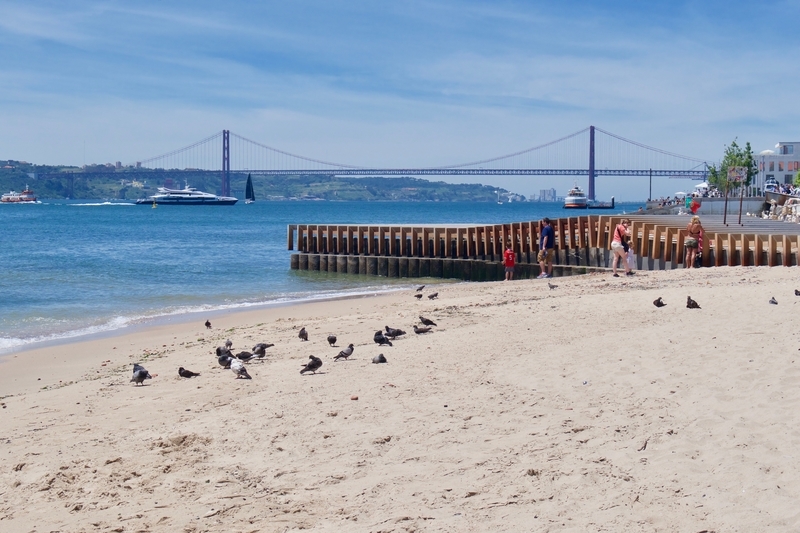
With two days in Lisbon, I did my best to tour the city’s best viewpoints, walk its prettiest streets, and sample its tastiest foods.
Of course, as with most large European cities, spending two days in Portugal’s capital only allowed me to scratch the surface and partake in a fraction of the city’s top things to do.
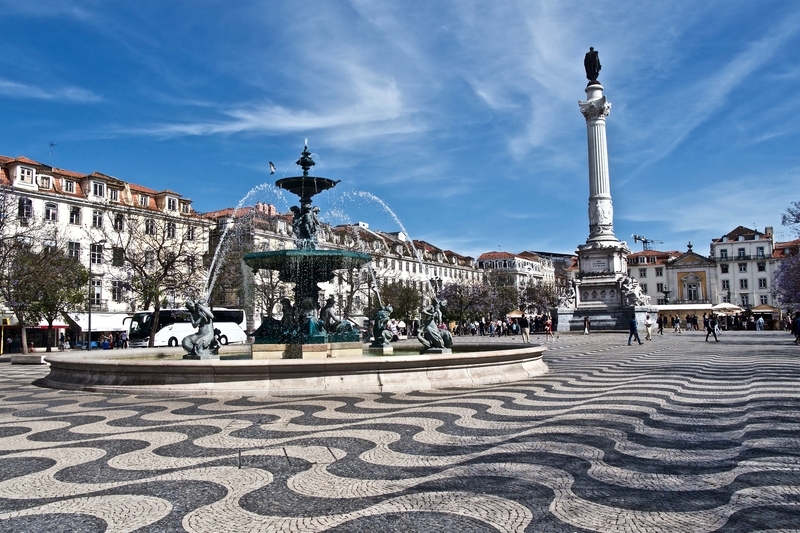
Still, my two day Lisbon itinerary brought me to some of the charming city’s most impressive monuments and post-card-worthy streets.
Since returning from Portugal, countless people have asked about my impressions of the two cities and have wondered which I find more worthwhile. And honestly, I don’t know. For, as a shopkeeper in Porto tried to explain to me in broken English, it is impossible to choose.
Porto is the country’s offbeat soul, she explained, but the City on Seven Hills is its undeniable heart.
ITINERARY DAY 1: LISBON’S NEIGHBORHOODS AND VIEWPOINTS
Like many great European cities, I found that the best way to explore Lisbon’s charms was to follow my feet through the city’s neighborhoods. Lisbon is walkable, compact and chock full of things to see. Yet, it is also a city that was built upon seven hills. So while walking was my favorite way to explore Portugal’s capital city, I soon realized that sore feet would be an inevitable consequence of visiting Lisbon.
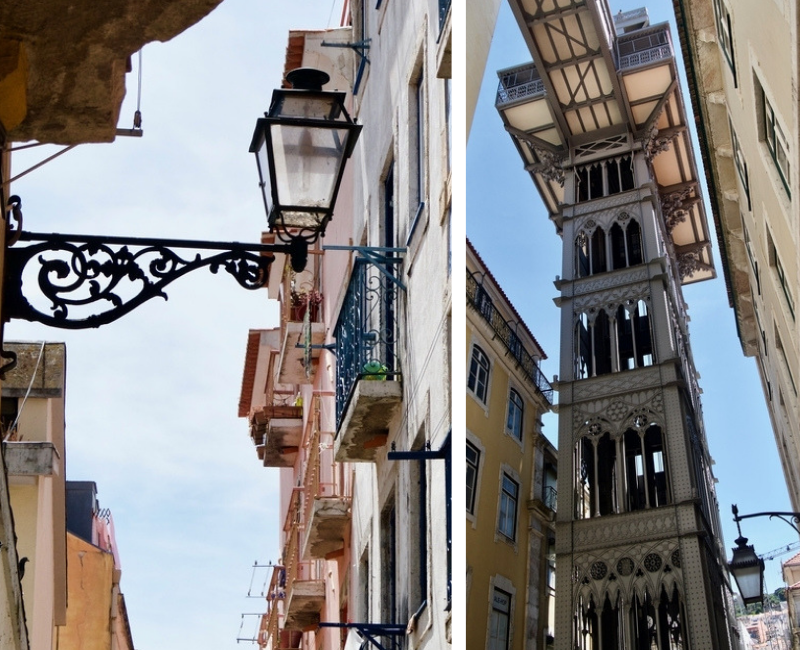
Setting out from my hostel near Marques de Pombal, I walked down the Avenida da Libertade to Rossio Square. From there, I wandered the sleepy backstreets of Baixa Chiado and the Alfama–taking in the pastel houses, the narrow alleyways and the Gothic Santa Justa Elevator.
-
WANDER THE ALFAMA
With a history that dates back to the Moors, the lovely Alfama neighborhood is characterized by quaint narrow streets that wind about the hillsides and give way to some of Lisbon’s most spectacular viewpoints.
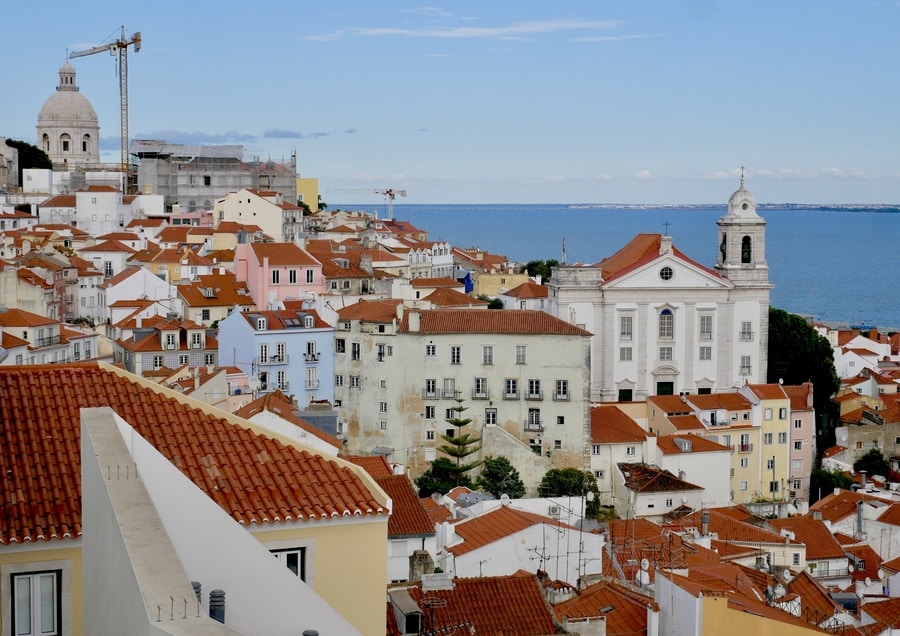
Due to its hilly topography, Lisbon has many viewpoints from which to admire the city’s attractive architecture. Particularly notable among them, are the Viewpoint of Santa Catarina, the Miradouro de Sao Pedro de Alcantara and the Miradouro das Portas do Sol.
-
VISIT THE SAO JORGE CASTLE
Perched atop one of Lisbon’s many hills, the fortified Castle of Sao Jorge is one of the city’s most emblematic sites. The gardens surrounding the castle offer some of the most photogenic birds-eye panoramas of Lisbon’s red-roofed houses and azure sea. In addition to providing some of the best and most uninterrupted views of Lisbon, the castle is a well-preserved example of Moorish architecture.
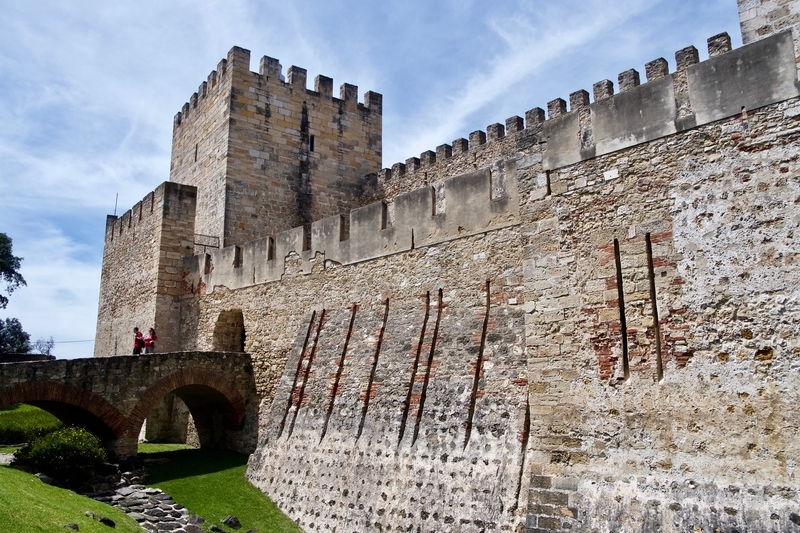
Entrance to the Castle of Sao Jorge costs €8.50 and includes access to a small archeological site that lies adjacent to its walls.
-
ADMIRE THE LISBON’S STREET ART
Lisbon might not yet have the street art reputation of places like Melbourne or Valparaiso, but its streets have no lack of colorful displays. Street art can be found in many neighborhoods around Lisbon and often reflects the country’s history and pop culture.
From the Alfama, we made our way to the Miradouro da Graça for sweeping views of Lisbon and the Sao Jorge Castle from above. The area is full of colorful flare and graffiti (both artistic and unsavory).
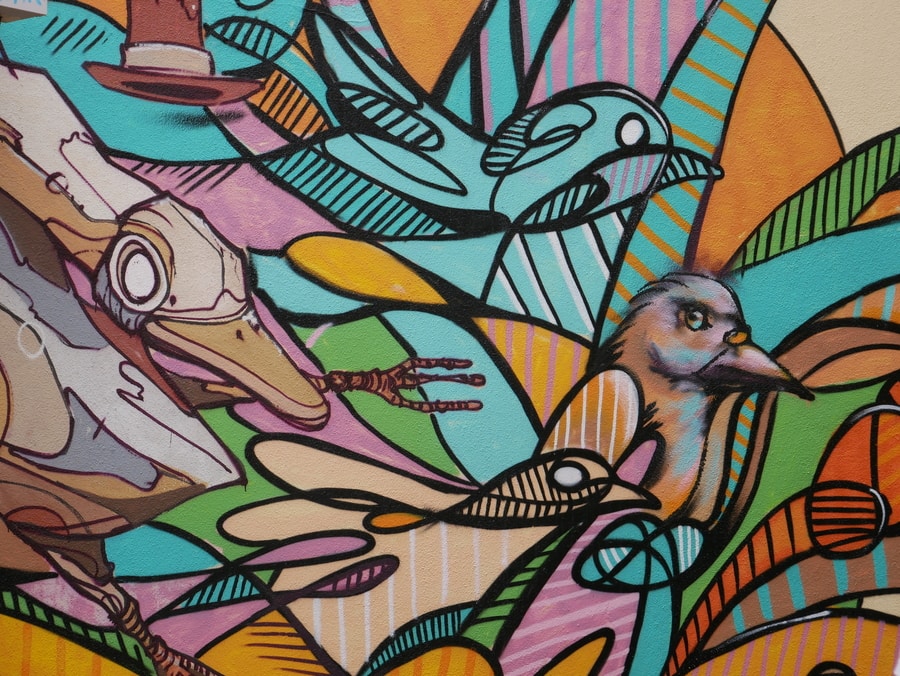
We particularly enjoyed admiring the colorful murals that line the staircase that descends from the viewpoint to the city’s lower areas.
-
EXPLORE BAIXA CHIADO
After touring the hills of the Alfama on foot and getting my bearings of the city, I spent the evening walking along the shop-lined Rua Augusta in Baixa Chiado. Filled with outdoor cafes, hole-in-the-wall pastry shops and plenty of handicraft stores, the popular pedestrian drag that leads to the grand Praça do Comércio is a great place to go souvenir shopping in Lisbon.
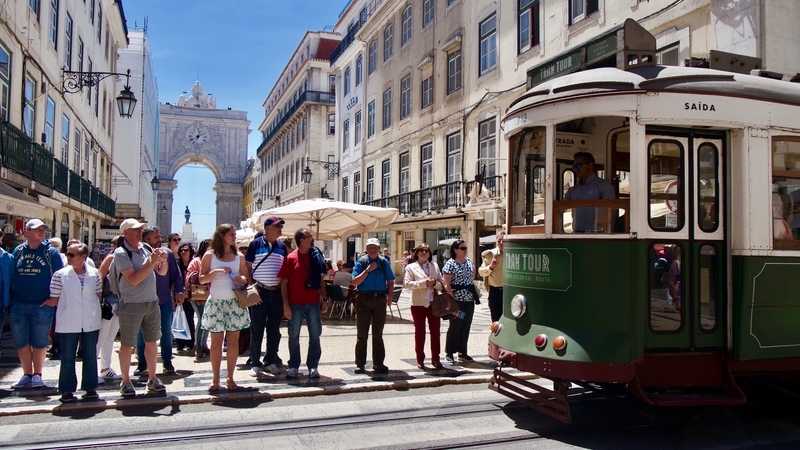
When I finally retired to my room after a full day of sightseeing and conquering steep uphill climbs, I’d logged 30,000 steps on my phone and had legs made of jello.
ITINERARY DAY 2: BELEM ATTRACTIONS
On my second day in Lisbon, I ventured from the city center toward Belém—a suburb situated along the Targus River.
Dazzling, culturally resplendent and uniquely significant in Portuguese maritime history, Belém is chock-full of World Heritage Sites and monuments recalling Lisbon’s seafaring past.
It is home to some of Lisbon’s most coveted attractions, as well as its most beloved custard tarts.

Belém is the place from which explorers set sail on their voyages of discovery. It is from here that Portuguese navigators—including Vasco da Gama and Ferdinand Magellan—expanded Europe’s world map and established Portugal as the world’s greatest sea power.
-
VIEW THE MONUMENT OF DISCOVERIES
The Padrão dos Descobrimentos statue was constructed in the mid-1900s to commemorate the explorers who charted the roads of the sea from these shores. It stands 52 meters high, towering over the Targus River.
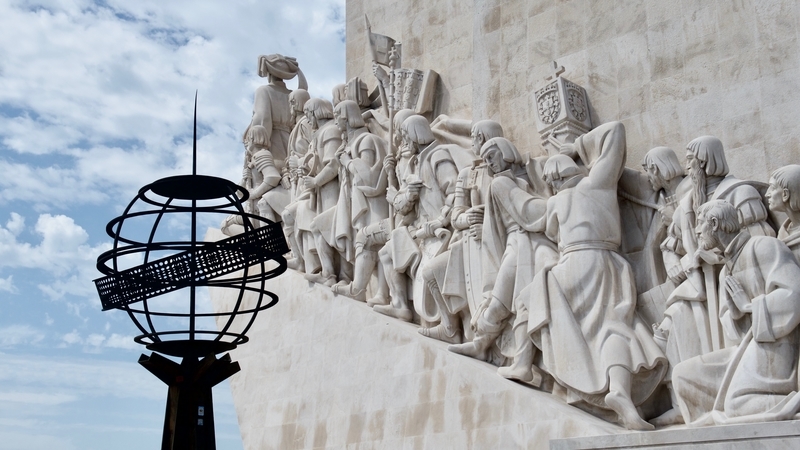
-
ENTER THE JERONIMOS MONASTERY
Near the Monument of Discoveries, the Jerónimos Monastery and the Belém Tower round out the triad of top things to see in Belem. The Jerónimos Monastery is one of the most prominent examples of Portugal’s Manueline-style architecture. In 1983, it was classified a UNESCO World Heritage Site, along with the nearby Tower of Belém.
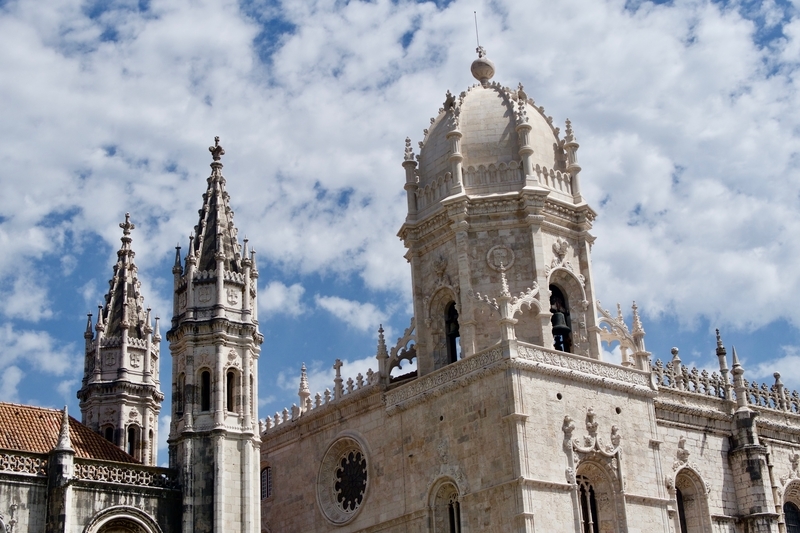
The monastery dates back to the late 15th century. Commissioned by King Manuel I, it was donated to the monks of Saint Hieronymus so that they would pay spiritual assistance to those who left Lisbon’s shores in search of the New World.
The exterior of the UNESCO-recognized monastic complex wowed me with its intricate spires, its ornate windows and its wedding-cake appearance.
On my first visit to Lisbon, I skipped out on the monastery’s interior because I didn’t feel like waiting in line and forking out the €10 to enter. On my return visit two years later, however, I entered the world-heritage-listed building and immediately realized that skipping the monastery on my first visit was a mistake.
The courtyard of the Manueline-style monastery is a work of art.
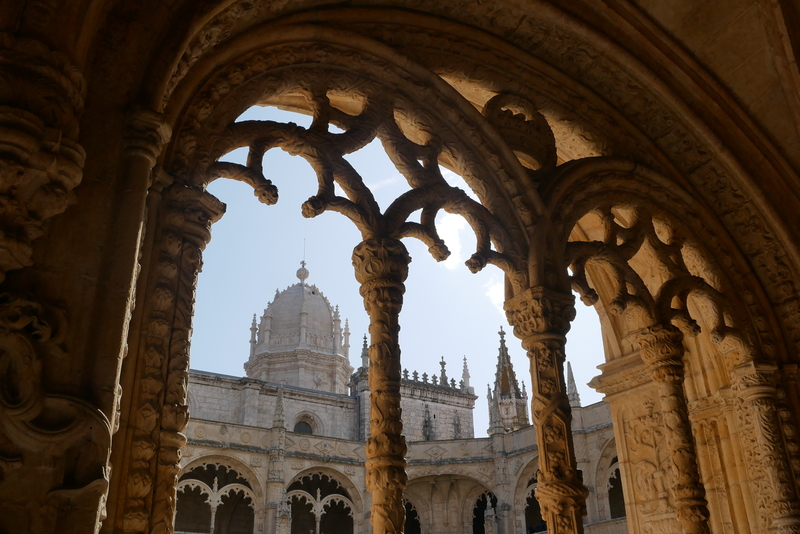
The honey-colored monastery cloister drips with detail. Intricate arches twist upward, showcasing delicate lattice-work of carved vine and floral motifs.
-
PHOTOGRAPH THE BELEM TOWER
Near the Jerónimos Monastery, Lisbon’s Tower of Belém looks out over the boat-speckled harbor. Perched at the end of a narrow walkway that juts out of Belém’s esplanade, this architectural gem is surrounded on all sides by water.
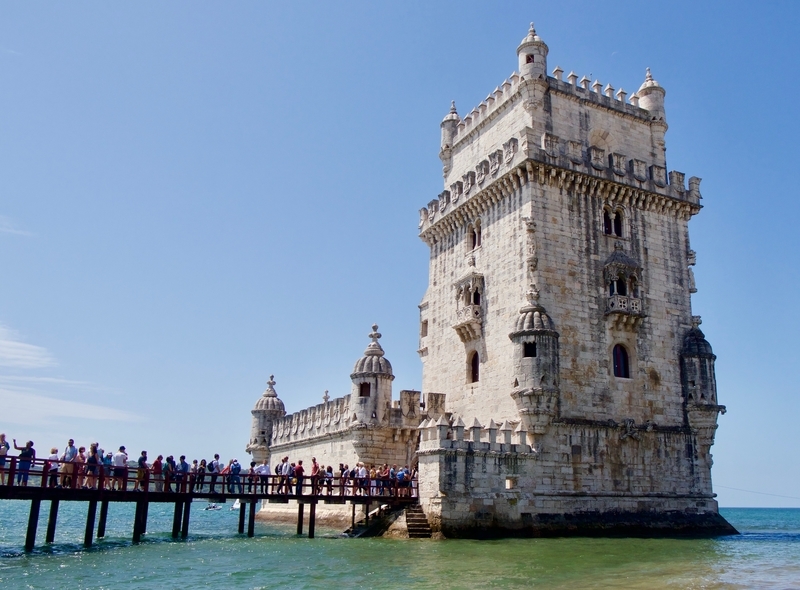
****
With my small bag of perfectly flaky Pastéis de Belém in hand, I sat near the Manueline tower and looked out at the waters of the bay. From my vantage point, I could see the details in the towering monument. Beyond, I could see the imposing 25 de Abril Bridge, the lands across the Targus and sailboats gliding about the waters of the natural harbor.
And I imagined what it must have been like to set sail from this point–traversing the open waters and encountering some of the world’s great landscapes and civilizations– back in the day when the Earth was flat.

